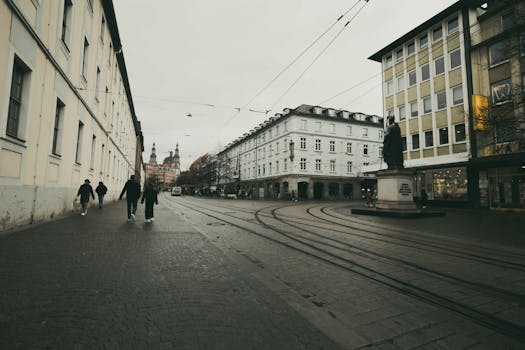
Urban Green Spaces: The Future of Outdoor Living in European Cities by 2025
Urban Green Spaces: The Future of Outdoor Living in European Cities by 2025 is a vital component of modern urban planning. As the world becomes increasingly urbanized, cities are seeking innovative ways to provide residents with access to nature, promote sustainability, and enhance the quality of life. In this article, we will explore the concept of urban green spaces, their benefits, and how they are transforming European cities.
What are Urban Green Spaces?
Urban green spaces refer to areas of vegetation, water, or other natural elements within urban environments. These spaces can range from small parks and gardens to large urban forests and green roofs. Urban green spaces provide numerous benefits, including air and water filtration, climate regulation, and habitat creation for urban wildlife.
Benefits of Urban Green Spaces
The benefits of urban green spaces are numerous and well-documented. Some of the most significant advantages include:
- Improved air quality: Urban green spaces can absorb pollutants and particulate matter, improving air quality and public health.
- Climate regulation: Urban green spaces can mitigate the urban heat island effect, reducing the need for air conditioning and heating.
- Enhanced biodiversity: Urban green spaces provide habitat for urban wildlife, supporting local ecosystems and promoting biodiversity.
- Recreational opportunities: Urban green spaces offer residents a range of recreational activities, from walking and cycling to sports and socializing.
- Mental health benefits: Urban green spaces have been shown to reduce stress, improve mood, and promote mental well-being.
Transforming European Cities
European cities are at the forefront of urban green space innovation. Cities such as Copenhagen, Stockholm, and Barcelona are investing heavily in green infrastructure, creating new parks, gardens, and green roofs. These initiatives are not only improving the quality of life for residents but also contributing to a more sustainable and resilient urban environment.
Case Studies
Several European cities are leading the way in urban green space development. For example:
- Copenhagen’s climate adaptation project has created a network of green roofs, parks, and gardens, reducing stormwater runoff and improving air quality.
- Stockholm’s Royal National City Park is a 27-square-kilometer green space, providing habitat for wildlife and recreational opportunities for residents.
- Barcelona’s Superblock program has created car-free zones, prioritizing pedestrianized streets, parks, and green spaces.
Future of Outdoor Living in European Cities
As we look to the future, it is clear that urban green spaces will play an increasingly important role in shaping the quality of life in European cities. By 2025, we can expect to see:
- Increased investment in green infrastructure, including parks, gardens, and green roofs.
- Greater emphasis on community engagement and participation in urban green space planning and maintenance.
- Integration of urban green spaces with other urban systems, such as transportation and energy.
- Improved access to urban green spaces, particularly in disadvantaged communities.





